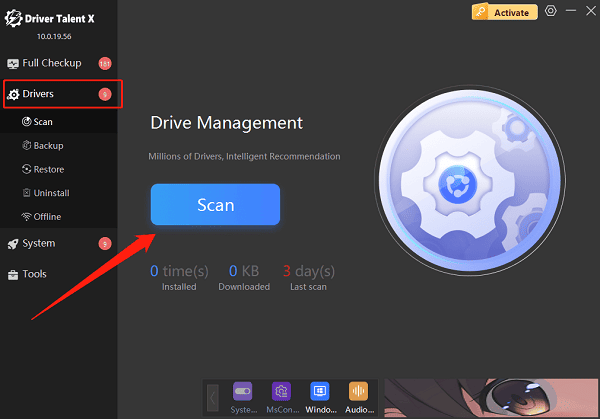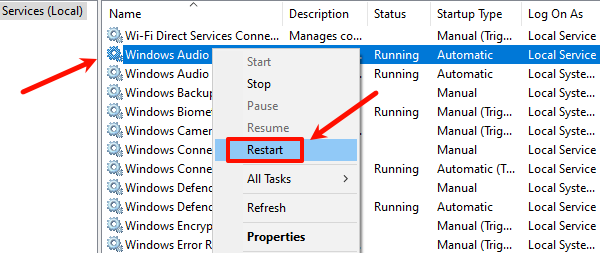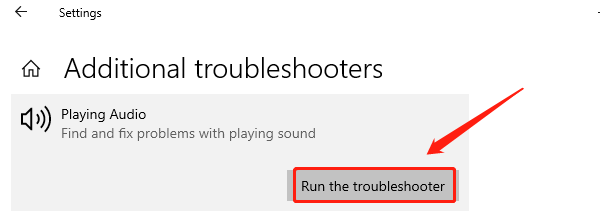When using a Windows computer, many users may encounter an issue where the system suddenly has no sound, the volume icon in the bottom-right corner shows a red "X", and a message appears saying "Audio services not running". This article explains the causes of the "Audio services not running" error and provides effective solutions to help you quickly restore your computer's sound.
1. What Does "Audio Services Not Running" Mean?
In Windows, the "Audio Services" manage the normal operation of all audio devices. If this service stops running, the system will not be able to process sound output, resulting in no audio. At this point, a red "×" appears on the volume icon, along with the message "Audio services not running".
2. Common Causes of This Error
Corrupted or incompatible audio drivers
Windows Audio Service is disabled or not started
Third-party security software blocking the audio service
Configuration issues after a Windows update
Corrupted registry or system files
3. Effective Methods to Fix the Error
Update Audio Drivers:
Outdated, corrupted, or incompatible drivers are one of the main causes of the "Audio services not running" error. Updating your audio driver can often resolve this issue. For users unsure of their hardware model or unfamiliar with manual driver installation, it is recommended to use Driver Talent X, which saves time and reduces the risk of installing the wrong driver.
Click the download button to get the latest version of Driver Talent X, install and launch the program.
In the "Drivers" section, select Scan, then click Scan. The software will automatically check the status of all your drivers.

Find the audio driver in the scan results and click the Upgrade button.
After the update is complete, restart your computer to apply the changes.
Restart the Windows Audio Service:
Press Win + R, type "services.msc", and press Enter.
In the Services window, locate "Windows Audio".
Right-click it and select "Start" (or "Restart" if it's already running).

Double-click "Windows Audio", set the Startup type to "Automatic", and click "Apply" > "OK".
Restart your computer and check if the audio is working.
Tip: If "Windows Audio" fails to start, make sure the "Windows Audio Endpoint Builder" service is also running and set to Automatic.
Check if the Audio Device Is Enabled:
Right-click the volume icon in the taskbar and select "Sound Settings" or "Sounds".
Go to the "Playback" tab and ensure the default audio device is enabled (not greyed out or marked with a red cross).
If disabled, right-click the device and choose "Enable".
Click "Set as Default", then click "OK".
Run the Audio Troubleshooter:
Press Windows + I to open Settings, then go to "Update & Security".
On the left panel, select "Troubleshoot", then click "Additional troubleshooters".
Find "Playing Audio", and click "Run the troubleshooter".

Follow the system instructions to fix the issue, then restart your PC.
Modify the Registry (Advanced Users Only):
Note: Please back up your registry before making any changes.
Press Win + R, type "regedit", and press Enter.
Navigate to: HKEY_LOCAL_MACHINE\SYSTEM\CurrentControlSet\Services\AudioEndpointBuilder
Ensure the "Start" DWORD value is set to "2" (which means automatic startup).

Close the registry editor and restart your PC.
4. Additional Suggestions
Check if third-party antivirus or firewall software is blocking the audio service.
If the problem occurred after a Windows update, try System Restore or uninstall the latest update.
If you're using a laptop, make sure the volume is not muted, and check if any "Fn" key has disabled sound.
The "Audio services not running" error may seem complicated, but it's usually caused by a stopped service or a faulty driver. By following the steps above, most users can restore their computer's sound. If none of these methods work, it's advisable to back up your data and reinstall Windows, or seek help from a professional technician.
